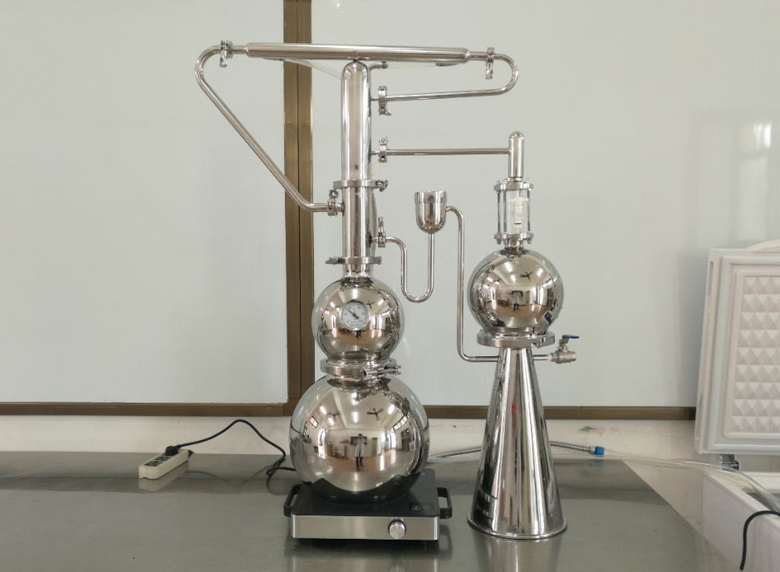
About 700 different kinds of plants contain useful essential oils, and there are several methods employed to extract them, the most common of which are water and steam distillation. We’ll focus on water distillation here.
Essential oils can be costly to buy but they are relatively inexpensive to distill at home. Some botanicals store their essential oil within their leaves or flowers while others may store the oil within their rinds, seeds or other plant parts.
What Are Essential Oils?
Essential oils are highly concentrated, volatile oils that are extracted from aromatic plants. Essential have been used by many cultures around the world for centuries. Essential oils have been used for cosmetic purposes and for their spiritually and emotionally uplifting qualities.
How To Make Essential Oils
- Harvest the raw plant material
- Dry the plant material (optional)
- Add water to the still
- Add your plant material to the still
- Heat the still
- Filter the collected oil
- Pour the oil into a container for storage
- Clean the still

1. Harvest Plant Material
The quantity of essential oils contained in a plant varies over the course of the plant’s development, so it is essential to harvest at the right time. This will depend on the type of plant, so you need to do some research to determine when to harvest. It is also critical to harvest the plants correctly. Careless handling, harvesting the wrong parts, even harvesting at the wrong time of day can reduce the quantity and quality of the essential oils. Always research the plant you wish to make essential oils from.
2. Dry the Plan Material
Drying reduces the amount of oil in each plant, but can greatly increase your yield per batch because you will be able to fit more material into each batch. Drying should be done slowly and NOT in direct sunlight.
3. Prepare The Boiler
Clean the still before use if you haven’t already done so (see step number 8 for more info). Next, one still with distilled water. This still will act as a boiler. Make sure you have enough water in the still to complete the distillation. Depending on the plant and on the quantity, distillation can take anywhere from a half-hour to six hours or more after the water boils.
4. Add Plant Material To Secondary Still
Do not chop or cut the plant material as doing so will cause you to lose some of the oils from the plant material. Add the plant matter to a secondary still. Steam will be piped into the bottom of this still and will rise up through the plant material on its way to the condenser.
5. Heat The Boiler
Turn the heat to high in the boiler and adjust as necessary once boiling temp is reached. As the still is heating up turn on the water for the condenser. It is recommended to turn the condensing water on at 150 Fahrenheit. Once the water is boiling and the condensing water is flowing the essential oils should begin to come through the drip-arm and into your collection vessel. The distillation process is pretty hands-off, but you will want to make sure that you do not run out of water in your still as this will damage the distillation equipment.
6. Collect and Separate Oil and Hydrosol
Distillate should be directed into a separatory funnel that is equipped with a stopcock at the bottom. Once your distillation is complete allow the hydrosol and oil mixture to sit for at least 12 hours, then drain hydrosol into one container and oil into another.
7. Store the oil
Once the oil has been harvested, store the oil in an airtight, tinted glass container, leaving as little headroom as possible. Store hydrosol in a clear glass container. Keep both in a cool dry location to achieve maximum shelf life.
8. Clean the still
Once you’re done distilling, rinse the still thoroughly and wipe out any residue. Next, use a food grade, professional cleanser to rid the still of any additional trace of the oil that was just distilled.